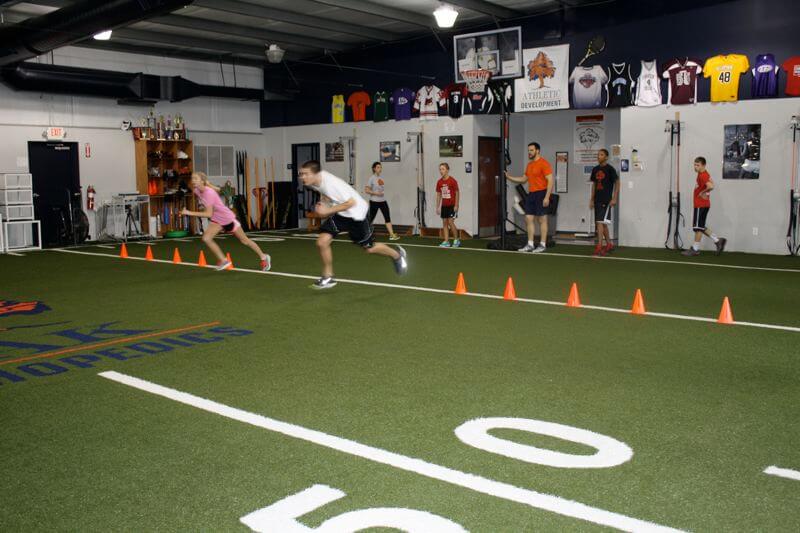Often times I hear a parent describe their son or daughter's coordination as simply good or bad. This is actually a limited perspective as coordination is comprised of several different characteristics. When we speak of movement coordination we are describing the ability to synchronize different parts of the body to execute a specifically defined task in an efficient and timely manner. Basically, a coordinated movement is smooth, efficient and is made to look easy. There are seven separate parts which can all be trained to help develop total movement coordination.
1) Balance- The ability to maintain the body's control of the center of gravity with minimal postural shifts.
2) Rhythm- The expression of timing with a uniform or patterned recurrence of movement.
3) Spatial awareness- The ability to know where you are in space and time in relation to your environment and the objects around you.
4) Reaction speed- The total time it takes to respond to a given stimulus.
5) Synchronization of movement- Harmonization and organization of movement.
6) Kinesthetic differentiation- The degree of force required to produce a desired result.
7) Movement efficiency- The display of efficiency or fluidity during locomotion.

Building movement coordination is a process which takes dedicated effort, patience and most importantly timing. There are naturally occurring periods of opportunity during a human's physical development when we are more sensitive or responsive to specific types of training stimuli. The windows for development do not remain open; in fact, the body is most receptive to coordination training during the ages of 6-14.
There is a time and place for everything and during childhood, preadolescence and early adolescence coordination training should be the number one priority. Often times we see other physical motor skills such as speed, power or strength as a primary emphasis during this period. This is a critical mistake as the window for building strength skills is later on in development. In fact once the window closes it stays closed and it becomes quite difficult to build coordination after those critical years of opportunity have passed. This is the primary reason why it is so difficult for adults to pick up a new motor skill later on in life.
The term neural plasticity is often used to describe the reasoning behind one's ability to easily pick-up new skills early on in life and why it is so challenging to do so later on in life. Neural refers to the nervous system and plasticity refers to its ability to change, bend and adapt. Every human movement that occurs begins and ends with the nervous system. There are specific neural pathways which dictate and control every motor skill we perform, whether it be standing, bending or jumping over a hurdle. These pathways are in place to help build a coordinated and efficient movement system, based on the messaging and communication between our nervous system and moving parts of the body. These neural pathways tell our bodies exactly how and when to move.

The case for neural plasticity suggests that during the developmental years of growth, it is critical athletes are introduced to different types of stimuli to improve all of the listed elements of coordination. This is the exact reason why it is so critical to expose youth athletes to many motor skills, sports and physical activities and why early sport specialization is a critical error. The easiest way to put this is, the more neural pathways we create during the critical periods for developing coordination the easier any athletic movement skill will be later on in life. The older we get the more neutrally rigid we get, which means what we have is what we have and developing coordination is going to be a serious challenge.
Like I said earlier there is a time and place for everything, don't rush, don't force it and please don't screw it up. If you let the body develop how it is designed to do the end product will be exactly what you were seeking from the onset. The long-term athletic development (LTAD) is the absolute best way to develop a complete athlete when it's all said and done.
Stay tuned as we will delve deeper into building coordination by examining the seven specific pieces that make it up.

